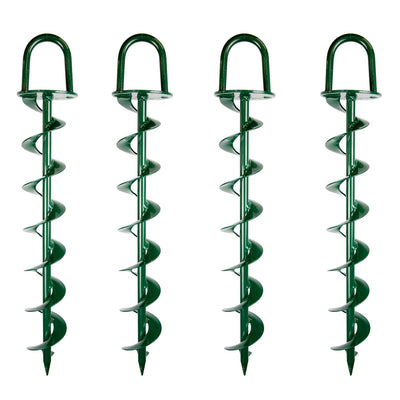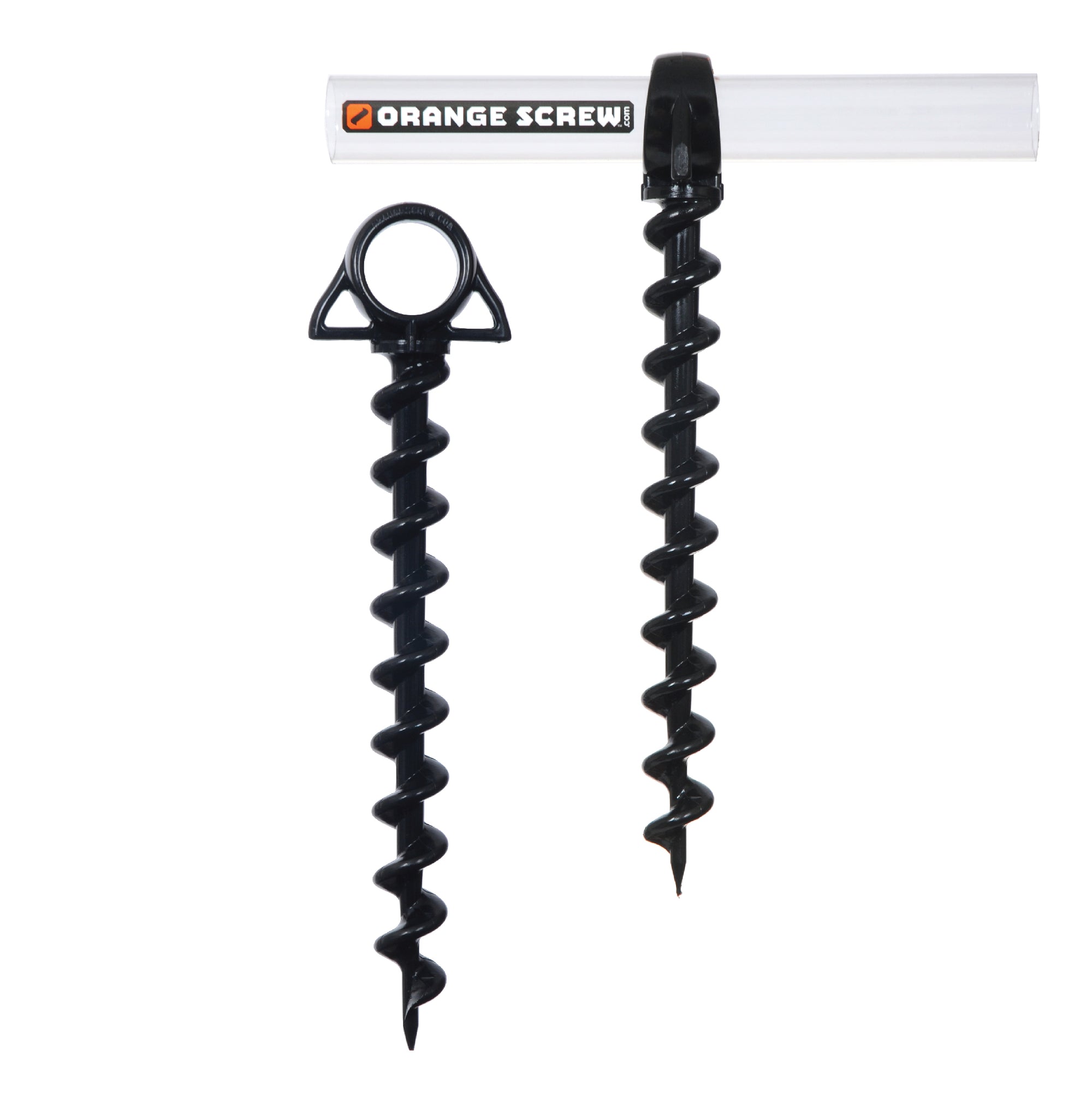Explore the Different Kinds of Ground Anchor for Your Next Job
When beginning on a building and construction or landscape design task, recognizing the different kinds of ground anchors offered is vital to making certain both stability and sturdiness (Ground Anchor). From auger anchors, which excel in varied soil problems, to stake supports developed for momentary installments, the options are various. In addition, concrete and screw anchors present unique advantages in particular situations, while deadman anchors are tailored for applications requiring resistance to side forces. The selection of an appropriate anchor type can dramatically influence the total success of your task, motivating further exploration right into their particular advantages and applications.

Auger Anchors
Auger supports are a popular choice in various construction and landscaping tasks because of their one-of-a-kind style and reliable securing abilities. These anchors include a helical screw-like shaft that is driven right into the ground, allowing for a secure and stable hold. The spiral style assists in very easy setup and optimizes resistance versus side forces, making auger supports especially effective in applications such as fence, momentary frameworks, and disintegration control.
The setup procedure of auger anchors is relatively simple. Auger supports can be quickly removed and reused, which adds to their cost-effectiveness and sustainability.
Among the substantial advantages of auger supports is their capacity to disperse loads equally across the bordering soil, lowering the risk of dirt disruption and reducing ecological impact. Furthermore, they are much less vulnerable to heaving or loosening up gradually compared to typical anchoring approaches. Consequently, auger supports are an excellent selection for jobs needing resilient and dependable anchoring remedies.

Risk Anchors
When it pertains to securing frameworks in a range of outdoor applications, risk anchors provide a straightforward and dependable solution. These supports are typically built from long lasting materials such as steel or light weight aluminum, designed to hold up against environmental tensions while supplying ideal stability. Their straightforward layout permits for fast installment, making them an ideal choice for irreversible or short-term anchoring requirements.
Stake anchors are particularly beneficial in securing outdoors tents, covers, and various other lightweight frameworks against wind and weather. They operate by being driven into the ground at an angle, creating a strong hold that stands up to pull-out pressures - Ground Anchor. The efficiency of stake anchors depends upon numerous elements, including soil type, dampness web content, and the angle of setup
For included safety, numerous stake anchors come with attachment factors for ropes or straps, enabling stress modifications as required. In applications such as landscape design or construction, they can properly stabilize devices or frameworks on unequal surface. On the whole, stake supports provide a versatile and economical solution for protecting various outside installments, making them a preferred option for specialists and DIY fanatics alike.
Concrete Anchors
Concrete supports supply a robust service for safeguarding structures to concrete surfaces, guaranteeing security and security in numerous applications. These anchors are essential for tasks varying from residential constructions to large industrial installments. They come in various types, consisting of growth supports, adhesive anchors, and undercut anchors, each made for certain load needs and ecological problems.
Development anchors count on mechanical systems to grasp the concrete when set up. They are ideal for medium to durable applications. Sticky supports use high-strength epoxy or material to bond the support to the concrete, providing remarkable load-bearing abilities, especially in split concrete situations. Undercut anchors produce a distinct shape within the concrete, providing exceptional holding power, particularly in applications where tensile tons prevail.
Picking the proper concrete support involves taking into consideration elements such as the weight of the load, the problem of the concrete, and environmental conditions. Appropriate installment strategies are crucial to ensure optimum efficiency and dependability. When implemented correctly, concrete anchors substantially boost the architectural integrity of different projects, making them important in contemporary construction techniques. Recognizing the certain demands of your project will help in selecting the appropriate kind of concrete support for the job.
Screw Anchors

Screw anchors are a flexible attaching solution that can be Continued properly utilized in a range of applications where standard concrete supports might not be adequate. These supports contain a helical design that enables them to be quickly driven into the ground, making them excellent for use in dirt and other substratums. Their special framework supplies excellent holding power and resistance to pull-out forces, making them suitable for many projects, from landscaping to structural support.
Among the primary advantages of screw anchors is their ease of setup. They call for minimal equipment and can commonly be installed without the need for excavation, which saves both time and labor prices. In addition, screw supports can be eliminated and reused, offering a sustainable solution for momentary applications.
Screw anchors are particularly helpful in areas where soil problems are testing, such as loosened or sandy dirts. Their capability to be installed at differing depths enables for modification based on particular job demands. On the whole, screw supports supply a effective and trusted securing method, making them a superb option for designers and professionals seeking reliable remedies for their tasks.
Deadman Anchors
Deadman anchors act as a robust service for stabilizing structures in challenging problems, especially where typical securing approaches might fall short. These anchors are composed of huge, hefty things buried underground, which develop resistance against side pressures. The style typically includes a horizontal component, such as a pop over to this web-site block of concrete or a steel plate, hidden in the soil, to which cable televisions or straps are affixed.
The efficiency of deadman anchors hinges on their ability to disperse lots over a larger location, minimizing the risk of failure in unstable dirt problems. They are specifically advantageous in applications such as retaining walls, temporary structures, and incline stabilization, where dirt motion can compromise the integrity of the framework.
Setup of deadman supports requires mindful preparation to guarantee they are put at the correct depth and positioning, optimizing their load-bearing capability. While they might require more labor and material than light-weight anchors, their reliability in negative conditions makes them very useful for long-lasting projects. Deadman supports are functional and can be adjusted to various applications, making them a go-to choice for designers facing unique challenges in their projects.
Conclusion
In recap, selecting the ideal kind of ground support is crucial for making sure security and safety and security in various tasks. Auger anchors excel in varied dirt conditions, while stake supports fit momentary applications. For concrete surface areas, expansion and adhesive anchors supply reputable choices, and screw supports offer adaptability in tough terrains. Deadman supports are specifically efficient in resisting side forces for retaining wall surfaces. Careful factor to consider of these options will certainly enhance task end results and structural honesty.
Furthermore, concrete and screw anchors present one-of-a-kind benefits in certain circumstances, while deadman supports are customized for applications requiring resistance to side pressures - Ground Anchor.Auger supports are a popular choice in various building and landscape design you could try here projects due to their unique layout and efficient securing capabilities. They come in various kinds, including growth anchors, glue supports, and undercut supports, each developed for particular tons requirements and environmental problems
Sticky anchors utilize high-strength epoxy or material to bond the support to the concrete, using superior load-bearing capabilities, particularly in cracked concrete circumstances. In general, screw supports provide a reliable and effective securing method, making them an exceptional selection for engineers and specialists looking for reliable options for their jobs.
Comments on “How a Ground Anchor Can Improve Security for Different Setups”